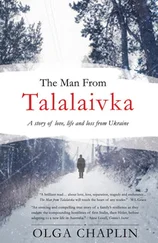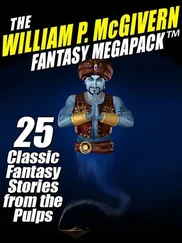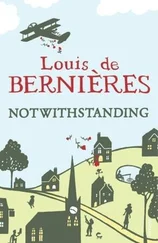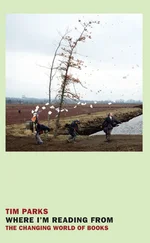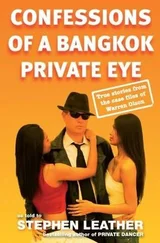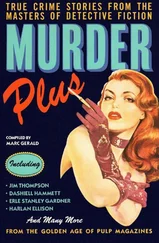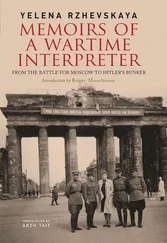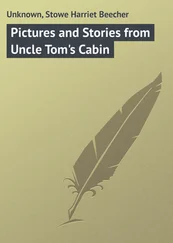During the 1990s I covered the Balkan wars and I am the Balkans correspondent of the Economist . Because of this, I often notice parallels and, drawing on my experience, mention them when I think relevant.
On September 4, 2015, Olha Voloshyna, who appears in chapter 10, “Stalin’s Chicken,” sadly passed away. She was ninety years old. On the same day, in Donetsk, Andrei Purgin, one of the founders of the Donetsk People’s Republic, was purged from his official position. Some analysts believed that this was because Russia wanted to get the rebels to implement the Minsk peace agreements. In the same week, the cease-fire line went quiet and the world’s media began reporting that Russian troops were arriving in Syria. Viktoria Demidchenko, who appears in “Surviving Sloviansk,” got a job as a schoolteacher and did not pay a bribe to get it.
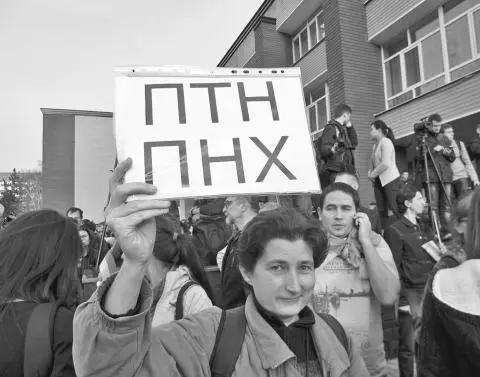
The last pro-Ukrainian rally in Donetsk. April 2014.
Donetsk, April 17, 2014. A pro-Ukrainian rally. The abbreviation PTN/PNH, which was to become common in Ukraine, translates loosely as “Putin—Go Fuck Yourself.”
All the contemporary interviews were done by me, with one exception. My colleague Harriet Salem interviewed and photographed Vladimir Antyufeyev, who appears in the Introduction, “Dying for Ukraine,” and gave me the transcript and pictures.
Andrey Kurkov’s novels paint a graphic and entertaining picture of Ukraine over the last two decades. He also chronicled the Maidan revolution in his Ukraine Diaries: Dispatches from Kiev (Harvill Secker, 2014). In it he wonders where he and his wife will be after the summer. He says he would like to believe that they and their children will be at their summer house enjoying themselves and talking about the future, but then he says: “It is funny but the future never seems to come.” Ukraine’s problem has always been that while the future does of course come, it is never the good and prosperous one that it could and should be.
Introduction. Dying for Ukraine
GDP figures are from the World Bank as are many of the other economic references. The World Bank’s reports can be found via its Ukraine site: worldbank.org/en/country/ukraine. Researching the book I also used the Economist Intelligence Unit’s regular Ukraine reports. References to the Balkan wars come from my own experiences, reporting and writing.
1. Weaponizing History
The full text of Putin’s Duma speech on March 18, 2014, can be found on the English pages of the Kremlin website, en.kremlin.ru .
2. Thumbelina in Donetsk
Timothy Snyder’s figure of 3.3 million dead from the Holodomor can be found on p. 53 of Bloodlands: Europe Between Hitler and Stalin (Vintage, 2011). The book is superb and above all readable, and I freely admit to drawing from it. For more on the Holodomor , see the chapter “The Soviet Famines” in his book.
3. “Our history is different!”
With reference to the Carpathians, I don’t quote from it, but a wonderful book is Under the Carpathians: Home of Forgotten People by J. B. Heisler and J. E. Mellon (The Travel Book Club, 1949). It was first published in 1946 but was based on research done just before the war. So, by the time it came out, the Carpathians as described in it no longer existed. It is full of beautiful pictures. In the same section I touch on the Orange Revolution and its legacy. Excellent basic books on the modern history of Ukraine include The Ukrainians: Unexpected Nation by Andrew Wilson (3rd ed., Yale University Press, 2009) and Ukraine: Birth of a Modern Nation by Serhy Yekelchyk (Oxford University Press, 2007). Wilson is also the author of Ukraine Crisis: What it Means for the West (Yale University Press, 2014), which chronicles the Maidan revolution. Not referenced, and focusing on events at the turn of the millennium, J. V. Koshiw’s Abuse of Power: Corruption in the Office of the President (Artemia Press, 2013) is an excellent primer on corruption at the heart of government.
4. “How can this be?”
This section draws on and from Vassily Grossman’s Everything Flows (Vintage, 2011); the quotes come from pp. 127–49.
6. Chernobyl: End and Beginning
The article I refer to by Mikhail Gorbachev can be found on the Project Syndicate website. It is called “Turning Point at Chernobyl” and was published on April 14, 2006. There is a lot of information about the work being done there now on the European Bank for Reconstruction and Development’s website under the section called “Chernobyl Shelter Fund.”
7. Lemberg to Lviv
The Snyder quotes come from Bloodlands , as do the statistics. Another invaluable resource drawn on here is his The Reconstruction of Nations: Poland, Ukraine, Lithuania, Belarus 1569–1999 (Yale University Press, 2003).
8. Ruthenes and Little Russians
The 1911 Baedeker’s guide to Austria-Hungary mentioned at the beginning of the chapter has been digitized and is readily available online.
9. Nikita at the Opera
Liberation , the 1940 film by Alexander Dovzhenko, can be found on YouTube. For anyone who wants to read more about Ukrainian nationalism, the OUN and UPA, see Myroslav Shkandrij’s Ukrainian Nationalism: Politics, Ideology, and Literature, 1929–1956 (Yale University Press, 2015).
10. Stalin’s Chicken
The Sefer Grayding can be found at jewishgen.org. It was originally published in 1981 by the Society of Grayding Emigrants in Tel Aviv. The testimony of Pitciha Hochberg is the last entry in the list of contents.
11. The History Prison
I draw on and quote from The Wartime Diary of Edmund Kessler, Lwow, Poland 1942–1944 , edited by his daughter Renata Kessler (Academic Studies Press, 2010). The quotes come from pp. 34–39. The Introduction, by Antony Polonsky, one of the world’s leading authorities on Polish-Jewish history, gives a concise history of the period, including lots of statistics on Lviv’s population and its changing ethnic breakdown over time. The quotation from Tarik Cyril Amar comes from his article “Different but the Same or the Same but Different? Public Memory of the Second World War in Post-Soviet Lviv.” He has posted it on academia.edu (with many other fascinating articles). It was originally published in the Journal of Modern European History in January 2011. The April 2015 open letter to President Poroshenko can be found by searching for “Open Letter from Scholars and Experts on Ukraine Re. the So-Called ‘Anti-Communist Law.’” It is on krytyka.com/en.
12. The Shtreimel of Lviv
Rabbi David Kahane recorded his experiences in wartime Lviv and how he was saved by Archbishop Andrey Sheptytsky in his book Lvov Ghetto Diary (University of Massachusetts Press, 1991), which is a translation of the original Hebrew version by Jerzy Michalowicz. The quote from historian Frank Golczewski comes from his essay “Shades of Grey: Reflections on Jewish-Ukrainian Relations in Galicia.” This is published in a wonderful collection called The Shoah in Ukraine: History, Testimony, Memorialization, edited by Ray Brandon and Wendy Lower (Indiana University Press in association with the United States Holocaust Memorial Museum, 2010). The quote can be found on p. 146. Another book covering this subject is Smoke in the Sand: The Jews of Lvov in the War Years 1939–1944, by Eliyahu Yones (Gefen, 2004).
Читать дальше


